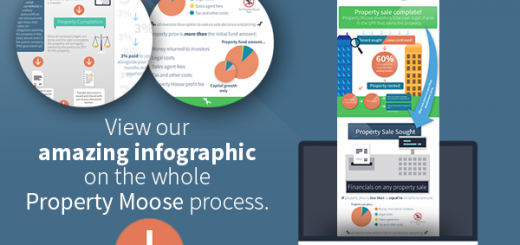What is Buy to Let?
Buy to Let properties are purchased with the intention of renting/letting it out.
Buy to Let investments may offer:
- Capital Growth
Capital growth involves a property’s appreciation. Put simply, it’s purchasing a property in the hope that, over time, it will become more valuable. This can be achieved through renovations or the property’s location becoming more desirable, thereby increasing the value of the property. So choosing well and researching the market may be crucial to this aim.
- Regular Income
As buy-to-let involves letting the property, you can expect to receive rental income once you have secured a tenancy. Often this is regarded as “the primary goal of buy-to-let investors.” (1) According to Marc Shoffman of This is Money, “The key to successful buy-to-let investing is generating income.” (2)
The Price
“The crucial difference with a buy-to-let mortgage is that the lender takes rent as the primary source of income - unlike with a residential mortgage where it is your salary that counts.” (3)
Traditionally, buy-to-let mortgages require “at least a 25 per cent deposit and rent to mortgage interest cover of at least 125 per cent.” (3)
One-off costs may include:
- Mortgage fees, stamp duty, conveyancing fees, surveyor’s fees and valuations. (1)
Ongoing costs may include:
- Property maintenance, insurance, letting agents and mortgage interest. (1)
Potential risks
- Buy-to-let investments are said to have low liquidity, as they tie up your capital.
- Property prices can go up as well as down, which could influence your feasibility of achieving capital growth.
- Rental income can fluctuate. If you struggle to secure a tenancy, you won’t receive any rental income. In addition, the amount a tenant is willing to pay “can vary according to supply and demand. If you have to reduce the rent, it could affect your ability to keep up with your mortgage payments.” (1)
- You are responsible for completing repairs and maintaining the property’s safety. Unexpected damage can put pressure on your cash flow.
- You need a large amount to get started. The deposit required can vary, however, it usually sits around 25% of the purchase price. (3)
Potential benefits
Buy-to-let property is thought to be an attractive investment at a time of “low interest rates and volatile stock markets.” (4) Despite some of the risks mentioned above, “investing in property has long been perceived to be a safe alternative to the failing of the pensions industry.” (4)
“Having long provided mega double-digit returns for investors, investment in buy-to-let has outperformed all major asset classes in recent years, with total annual returns from buy-to-let property hitting 12% in 2015 or £21,988 in absolute terms.” (4)
So, how can you achieve the potential benefits of a buy-to-let investment opportunity and potentially minimise the hassle involved?
We might have a solution for you here at Property Moose. Our mission is to minimise the hassle involved in property investment. Let’s take a look at the potential risks of traditional buy-to-let investments discussed above, and find out how Property Moose attempts to combat them.
- Buy-to-let investments are said to have low liquidity, as they tie up your capital.
In an attempt to provide liquidity, we introduced a Secondary Market to our platform last year. This allows investors to sell the shares they own in various investments should they find a willing buyer. This online trading platform allows you to sell your shares at a discount if you’re in a hurry and want to incentivise a buyer, or, you can choose to try to sell your shares at a premium rate, and potentially make a profit.
- Property prices can go up as well as down, which could influence your feasibility of achieving capital growth.
Of course, whether property prices go up or down is beyond our control. However, we source properties in areas we believe to have capital growth potential. This is why many of our properties are in greater urban areas, in the North West, the Midlands, and the North East.
- Rental income can fluctuate. If you struggle to secure a tenancy, you won’t receive any rental income.
If there is no tenant, then there is no rent. This is a concern for anyone investing in property, and it’s no different if you invest through us. However, we have aimed to minimise the risk as much as possible by forming partnerships with local management companies in all of the locations that we list properties. By using agencies that have expert local knowledge we hope to keep any void periods to a minimum and to secure the best rental yield possible. In addition, we source properties in areas where we believe there is a strong demand for rental units.
- You are responsible for completing repairs and maintaining the property’s safety. Unexpected damage can put pressure on your cash flow.
You won’t be asked for any money to fix a leaky tap or unblock a drain. There is a provision fund on each property investment, which is usually 1% of the purchase price per annum (please check each individual investment case as this may vary) and raised in the initial fund amount to cover any unexpected costs. The provision fund should sufficiently cover any maintenance costs for the full term and is put in place to encourage a consistent yield and to prevent rental income being affected by unforeseen costs.
- You need a large amount to get started. The deposit required can vary, however, it usually sits around 25% of the purchase price. (3) You will also need to ensure the rent covers the mortgage.
You only need £10 pounds to get started and call yourself a landlord. There is no mortgage involved. We’ve set the minimum investment as low as this to give more people the opportunity to climb the property ladder.
So, why not join the crowd today?
Some of our buy-to-let opportunities are nearing the end of their investment term. Here’s everything you should know about their exits.
Written by Jenna Kamal
Sources
- https://www.momentum.co.uk/investments/buy-to-let-guide/
- http://www.thisismoney.co.uk/money/buytolet/article-3097699/How-work-rental-yield-buy-let-investment.html
- http://www.thisismoney.co.uk/money/mortgageshome/article-1585104/Buy-let-mortgages.html
- https://www.estateagenttoday.co.uk/industry-views/2016/9/is-buy-to-let-investing-still-a-safe-bet
Disclaimer and Legals
Property Moose does not provide any advice in relation to investments and you must rely on your own due diligence before investing. Please remember that property prices can go down as well as up and that all figures, rates and yields are projections only and should not be relied on. If in doubt, please seek the advice of a financial adviser. Your capital is at risk if you invest. This post has been approved as a financial promotion by Resolution Compliance Limited.
Property Moose is a trading name of Crowd Fin Limited which is an Appointed Representative of Resolution Compliance Limited which is authorised and regulated by the Financial Conduct Authority (no: 574048).



